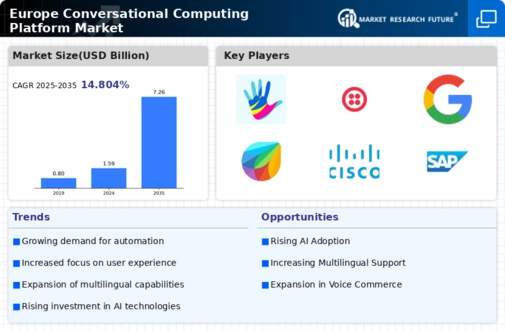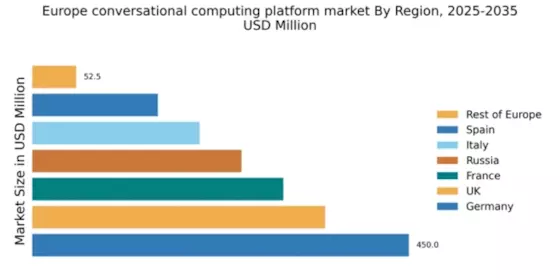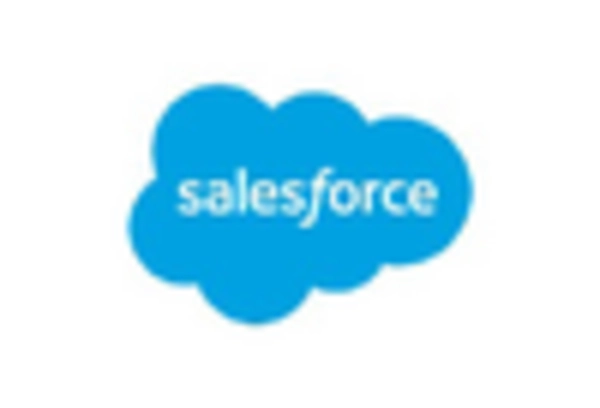Germany : Strong Growth Driven by Innovation
Germany holds a commanding market share of 36.5% in the European conversational computing-platform market, valued at €450.0 million. Key growth drivers include a robust tech ecosystem, increasing demand for AI-driven customer service solutions, and supportive government initiatives promoting digital transformation. Regulatory frameworks are evolving to ensure data privacy and security, fostering consumer trust and adoption. Infrastructure investments in broadband and 5G are enhancing connectivity, crucial for real-time applications.
UK : Innovation Fuels Conversational Growth
Key markets include London, Manchester, and Birmingham, where tech hubs are thriving. Major players like Google and Amazon have established significant operations, intensifying competition. The local market is characterized by a collaborative environment, with many startups partnering with established firms. Industries such as e-commerce, finance, and healthcare are rapidly adopting conversational platforms to enhance customer engagement.
France : Strong Focus on Innovation and Regulation
Key markets include Paris and Lyon, where tech startups and established firms collaborate. Major players like IBM and Microsoft are investing heavily in local operations, creating a competitive landscape. The business environment is favorable, with a focus on innovation and sustainability. Sectors such as tourism, retail, and public services are increasingly leveraging conversational platforms to improve user experiences.
Russia : Diverse Needs Drive Local Solutions
Key cities like Moscow and St. Petersburg are central to market activities, with local players like Yandex gaining traction. The competitive landscape includes both international giants and local startups, creating a dynamic environment. The business climate is evolving, with a focus on adapting global technologies to meet local needs. Industries such as retail, telecommunications, and finance are key adopters of conversational computing.
Italy : Focus on Customer Engagement Solutions
Key markets include Milan and Rome, where many tech startups are emerging. Major players like SAP and Nuance are establishing a presence, intensifying competition. The local market dynamics favor collaboration between startups and established firms, fostering innovation. Industries such as fashion, automotive, and tourism are increasingly adopting conversational technologies to enhance customer interactions.
Spain : AI Adoption on the Rise
Key markets include Madrid and Barcelona, where tech innovation is thriving. Major players like Amazon and Google are expanding their operations, creating a competitive landscape. The local business environment is favorable, with many startups emerging in the AI space. Industries such as tourism, retail, and telecommunications are key adopters of conversational platforms, enhancing customer experiences.
Rest of Europe : Varied Adoption Across Regions
Key markets include smaller countries like Belgium and the Netherlands, where local players are emerging. The competitive landscape is fragmented, with both international and regional players vying for market share. The business environment varies, with some countries fostering innovation while others face regulatory challenges. Industries such as retail, healthcare, and education are exploring conversational technologies to improve service delivery.


















Leave a Comment